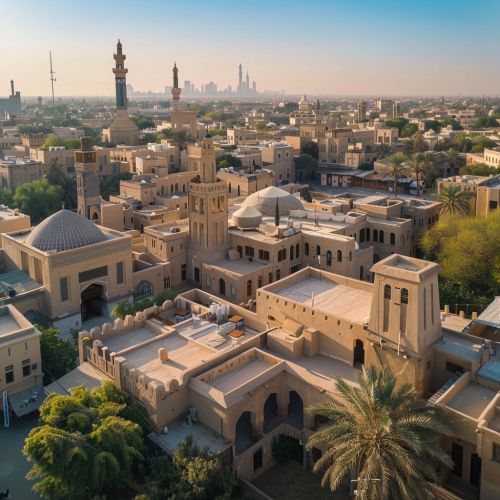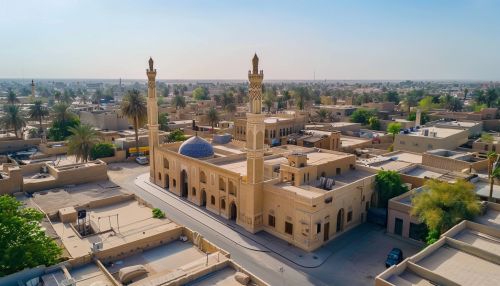Middle East
Geography
The Middle East is a transcontinental region in Afro-Eurasia which generally includes Western Asia (except for Transcaucasia), all of Egypt (mostly in North Africa), and Turkey (partly in Southeast Europe). The term has come into wider usage as a replacement of the term Near East (as opposed to the Far East) beginning in the early 20th century. The broader concept of the "Greater Middle East" (or Middle East and North Africa) also includes the Maghreb, Sudan, Djibouti, Somalia, the Comoros, Afghanistan, Pakistan, and sometimes Transcaucasia and Central Asia into the region. The term "Middle East" has led to some confusion over its changing definitions.


History
The history of the Middle East dates back to ancient times, with the geopolitical importance of the region being recognized for millennia. Several major religions have their origins in the Middle East, including Judaism, Christianity, and Islam. Arabs constitute the majority ethnic group in the Middle East, followed by various Iranian peoples and then by Turkic speaking groups (Turkish, Azeris, and Iraqi Turkmen). Native ethnic groups of the region include, in addition to Arabs, Arameans, Assyrians, Baloch, Berbers, Copts, Druze, Greek Cypriots, Jews, Kurds, Lurs, Mandaeans, Persians, Samaritans, Shabaks, Tats, and Zazas. European ethnic groups that form a diaspora in the region include Albanians, Bosniaks, Circassians (including Kabardians), Crimean Tatars, Greeks, Franco-Levantines, Italo-Levantines, and Iraqi Turkmens. Among the minority of non-native residents, many people are also of South Asian, Southeast Asian, Hispanic, or Sub-Saharan African descent.
Politics
The Middle East is very diverse when it comes to religions, many of which originated there. Islam in its many forms is by far the largest religion in the Middle East, but other faiths that originated there, such as Judaism and Christianity, are also well represented. There are also important minority religions like Bahá'í, Yazdânism, Zoroastrianism, Mandeanism, Druze, Yarsan, Yazidism, Ahl-e Haqq, and Shabakism, and in ancient times the region was home to Mesopotamian Religion, Canaanite Religion, Manichaeism, Mithraism, and Zoroastrianism. There are also many atheists, agnostics, and people who do not identify with any religion living in the Middle East.
Economy
The economy of the Middle East is very diverse, with national economies ranging from hydrocarbon-exporting rentiers to centralized socialist economies and free-market economies. The region is best known for oil production and export, which significantly impacts the entire region through the wealth it generates and through labor utilization. In addition, the region has significant amounts of natural gas exports, and also phosphates, with Morocco having 75% of the known reserves.
Culture
The cultures of the Middle East are diverse and varied. They have been influenced by many civilizations, including those of the ancient Egyptians, Persians, Greeks, Romans, Byzantines, Arabs, Turks, and Europeans. The Middle East has a diverse population of many ethnic, religious, and linguistic groups. Arabic, Persian, Turkish, Berber, and Kurdish are the main languages spoken in the region, with English, French, and Russian also widely spoken due to colonial influences.
